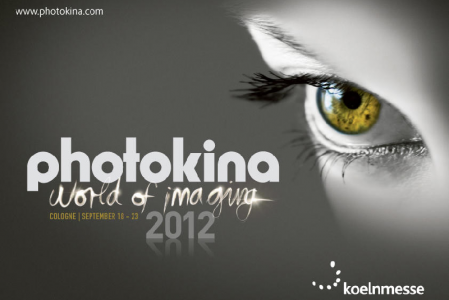Q&A with Leica’s Justin Stailey: How the new Leica M and S may be the Porsches of enthusiast digital cameras
posted Monday, September 24, 2012 at 12:14 PM EST
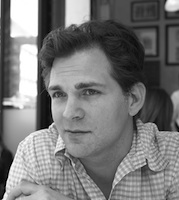
Leica made a splash as Photokina 2012 by introducing five new cameras, headlined by the Leica M, M-E and S. But it wasn't merely alphabet soup -- a lot of thought and technological innovation went into these new releases. Our founder and publisher Dave Etchells discussed the details with Justin Stailey, M-System Product Specialist.
Dave Etchells/Imaging Resource: Let's get right to it with a question from one of our editors. You recently broke ground on the new 300,000 square foot headquarters and factory in Wetzlar, Germany [located just north of Frankfurt]. Though we think of Leica as a premium brand that sells hand-built cameras in lower volume, business must be booming because you're expanding and building a new facility. Will that factory be used to expand your hand-built production, or will it also include more mass-market designs?
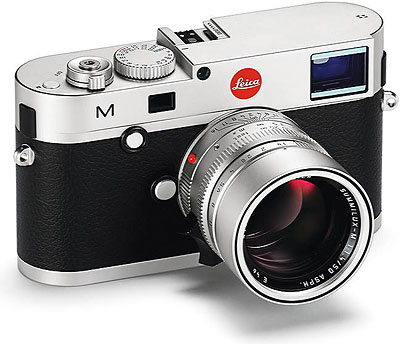
Justin Stailey/Leica: German labor is probably one of the most expensive things. So the factory in Solms, if I would take you down there, the production's busting at the seams and we still have backlog on lenses and camera bodies. Having a bigger facility isn't necessarily just about creating an impressive new building; it's that demand is so high, we can't keep up. And now we have a family of Leica Ms to add to production, the M, M-E and Monochrom. We're making one of those at a time, and that's not counting making MPs or M7s.
When I first started with Leica in 2007, I went to Solms and toured the factory, there were aisles between the lens grinding machines. There was room: It was comfortable for the guys to work. Now they have shifted everything. What minimum space do we need between these two machines so that we can get an extra machine so they can have room to grind? When you're grinding single elements one piece at a time, and you're testing and checking things the way that we do, you need more space.
DE: It sounds like the digital era has been good to Leica.
JS: We've got a good wind at our backs, I would say right now.
DE: When do you expect the Wetzlar factory to begin production?
JS: The factory will be finished next fall. There's a lot to it. What people don't realize is that the machines that we use for grinding optics, you just don't go out and buy one. We have to order that to have it made to our specifications. And then it's the employees coming online because if you're expanding production, you need to then have people who are trained and skilled at using the machinery, the tolerances we require. It's not like we can just turn a switch or open a tap and more product flows out. There's a lead-time to get the factory up and running.
DE: Once the new factory opens, will everything move over there?
JS: From what I've been told the plan is that the current factory is going to stay in production, at least initially. It's going to be a transition from one to the other. I'm being told that they're going to keep the Solms facility producing to help catch up.
DE: Now on to the cameras themselves. You changed the names of some of them. You moved away from model numbers. So going forward, it'll just be the current M.
JS: Well, the model on that naming strategy comes from the automotive industry. If you look at Porsche, they make a 911. But to a 911 owner, it's more specific. From the early 90's, there's a 964. The last generation air-cooled is a 993 from the end of the 90's. Then there's the 996, then 997, etcetera. So internally, they have project names or product names. But to the world, it's a 911. We're trying to go to that sort of a mentality, so it's all an M camera. To be specific, the new M is really a type 240 and the new M-E, a Type 220. That's how we plan to differentiate them. And they're actually marked on the cameras as such.
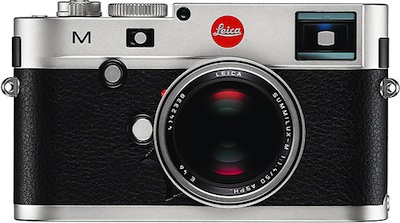
DE: Many of us in the photo industry have watched the troubles at Kodak with sadness and a sense of trepidation. I imagine that's been even more of a concern for Leica since you've used so many Kodak sensors. Have there been any adverse effects for Leica with all the turbulence in Kodak and now the spinoff as Truesense?
JS: From what I'm told, nothing. The contracts were in place, that division being sold off early on. I have not heard any ill effects from Kodak selling off the sensor division to Truesense.
DE: Now on the new Leica M, you've got a new sensor supplier, CMOSIS from Belgium. What was the motivation to make that transition? Does it have to do with the CMOS technology or did it have to do with video capability?
JS: There was a desire, I know, to put CMOS in the camera to open up the camera for higher ISOs, to give some of the advantages that a CMOS chip can give to the camera. And because of the design of the M and because of certain requirements, CMOSIS was able to develop a product for us, that was a customized product proprietary to Leica.
DE: The custom nature of the sensors is important, too. Leica uses the offset microlenses to be able to handle the short back-focus distance.
JS: The offset microlenses, there are unique problems that we have with the M-mount because of the proximity of the lens and the focal plane. It presents a unique set of technical hurdles for us and it requires some customization to that chip. I was in a meeting at one point where they were talking about buying off-the-shelf CMOS chips and our wide angle lenses were unusable with them. We would then have to redesign every M lens. It's just not going to happen.
DE: I understand with the new sensor, you've made some changes to the microlens design. I guess you reduced the gap somewhat between the color filter array and the photo diodes. Can you tell us more about what the changes were and why they were made? Does it have to do with reducing cross-talk between the adjacent photo diodes? And if you can, what level of improvement can you see the new sensor design relative to the old one?
JS: A lot of the changes in the sensor are to compensate for the depth of the chip. That depth gives us a bigger problem with the angular rays out toward the edges. And so CMOSIS had some technology that they could miniaturize and reduce that layer down to a minimum which allows that Bayer array to be closer, which then allowed the microlens design to change.
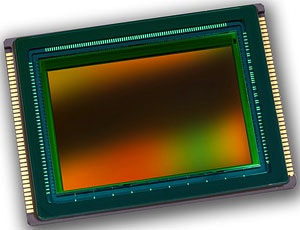
DE: You have a better angle of acceptance then for the individual photo diodes across the chip.
JS: And the new design allows for larger photo diodes. If you look at the back of the M brochure, there's a schematic, showing the standard CMOS versus the one we're using. And one of the things to notice is that the photo diode actually gets wider.
DE: There's less space lost for the peripheral circuitry.
JS: Exactly. So there's lots of little changes that helped to facilitate it for us, for the M camera. But it was also wanting to maintain it so that our SLR lenses were still fully functional. It's a balancing act that we didn't make it too proprietary towards the wide angle and that we'd eliminate the use of an 800mm Telyt or something like that. We didn't want that. This chip gave us the flexibility to optimize it for both.
DE: The new sensor and processor allowed you to add Live View and focus peaking to the M. That's quite a big departure from the Leica cameras of days past. Is this something you've been hearing a lot of demand for, from users even of viewfinder cameras? Was it driven by user demand or was it driven by Leica's capability?
JS: Well, part of it was taking the M-system and wanting to open it up to more applications. An M camera -- I always make the analogy that an M camera is a chef's knife and an SLR is a Swiss Army knife -- is really great at focusing fast lenses very accurately. It's great for wide angle lenses and that sort of moderate telephoto. If we try to shoot macro with an M, we have handicaps. We can't shoot anything longer than 135, the frame lines are tiny, the focusing accuracy starts to decrease because of the rangefinder baseline. So we have this area that we operate in. With the CMOS chip and having the ability to do Live View, we then can open the camera up to other applications. So that allows the camera to now have potential for macro or have potential with the R adapter to put anything you want on the M system.
I don't think one drove the other. I think it was a desire to expand the possibilities of the M, to make the M more versatile than what it was before. And that technology allowed us to do that, allowed us to actually make it so that I could clip an electronic viewfinder on top of the camera and make it different. It's just an increase in flexibility, an increase in the versatility of the system. It's really where it became kind of interesting. And same thing then with the video aspect of it.
DE: I was going to ask you about that, too. That's obviously a whole new area for Leica.
JS: It's something we've actually had a lot of requests for. People want to use M lenses -- the finest optics in the world -- to shoot video and every camera up until this point that shoots video has always had limitations with it. The DSLR cameras, you can't mount an M lens on. Because of the flange-to-focal distance the M lens doesn't focus to infinity. Cameras like the Red can't use the wider angle M lenses because of the optics. The 35mm f/1.4, for example, actually protrudes back to the mount. The way their mount is designed, this would hit the metal baffle. We wanted to provide the flexibility to be able to use these optics without being detrimental to the still camera aspect of the camera that you know.
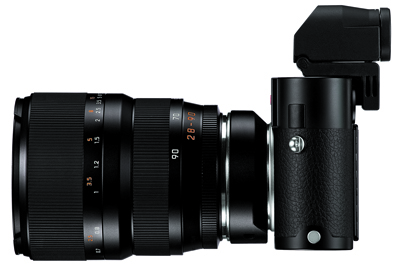
DE: I think a lot of pro photographers are getting a lot of requests from their clients for video, even if they're mainly still photographers. Clients almost expect the double duty. They'll say, "Oh, could you shoot a little video while you're at it?"
JS: Talking to a couple of my friends who are Leica users and documentary photographers, we've become fascinated with the concept of shooting video using the rangefinder. I now have an old Bolex kind of viewfinder look on the world where I'm not looking on the screen at the back. I'm not putting a camera here on a big rig. I have the ability with an EVF from up here and be shooting video as opposed to needing a screen.
DE: The Leica M now is splash-proof. One question we had was how "proof" is splash-proof? Is it you know, splashes, rainshower? I mean, what do you think it can stand up to?
JS: They haven't had the chance to do the official test yet. So there's no spec for it yet as to how splash-proof it is. The intent is that you can go out in the rain with it and you don't have to worry about it.
DE: Is there need to do any splash-proofing with the lenses?
JS: The tolerance of the lenses and with the helicals and the lubricant, they are already fairly impervious to it. If they find there's a need to put a ring on the back of the lenses, they could actually do that at a future date.
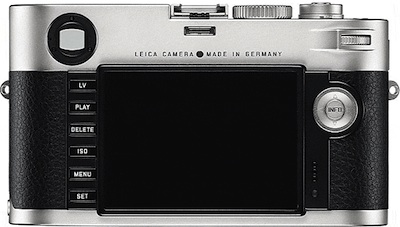
DE: We see you've switched to a Corning Gorilla Glass screen rather than the sapphire glass. What was behind that? Is it a matter of cost or does it have any benefits with Gorilla Glass you didn't have with sapphire?
JS: I know that in general, for the M, it was a move up from the synthetic screens that were on them before, to go with a glass screen that was going to be a truer, clearer screen. And it's going to be more impervious to scratches. Without having the expense of sapphire. Sapphire glass, at that size, is not inexpensive.
But from what I understand, we're still using sapphire on some models. The Monochrom's coverglass, for instance, is sapphire.
DE: You launched quite a few new accessories for the Leica M, and the R-to-M adapter is particularly interesting. Will that also work with other M bodies and does it communicate the 6-bit coding through the adapter?
JS: With other M bodies, you lose the rangefinder coupling. So I can physically mount it on an M9 but I wouldn't have the focusing. It's utilizing the Live View technology on the M to use that adapter. There's a 6-bit code on the back of the R adapter that when the firmware's finished, it's going to come up on the back and say, which R lens are you using? It has a listing of, I believe, 21 different R lenses that you can then plug in.
It does not automatically identify. That would require a battery in the adapter and electronics in the adapter. And it will also then limit you because at that point, you would have to use one of our ROM lenses -- the last generation of the R-system that had the pin contacts at the top of it -- so it could talk to the adapter, so that it could talk to the camera body. This lets you go all the way back to the 60's with the R-mounts.
DE: Moving on to the new Leica M-E, we imagine there's more than a few photographers out there who are excited that a Leica is at least somewhat within their budget. Was the M-E always on the drawing board, or has Leica actively sought ways to bring the price down to open up more market from the lower end?
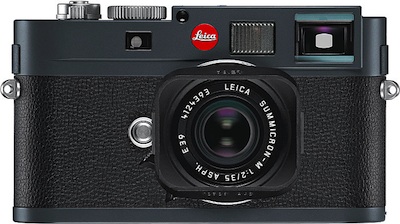
JS: There's always been talk. I know from the customer base, we're always asked for something on the lower end. The philosophy of that camera though wasn't looking for something on the lower end. The M has tons of bells and whistles, like video, live view, etcetera. And we recognize there are some photographers who might not want those things. We were looking to have that traditional camera and then have the M camera: To have two tiers to the marketplace.
It's the old joke about what's an entry-level Porsche? A used Porsche is an entry-level Porsche.
DE: That's a good analogy. You have some exciting news on the S-system front too, starting with lenses. You revealed the first S-mount tilt-shift and zoom lenses. Did those present any particular challenges for the design team?
JS: Tilt shift, I'm sure that presented a huge challenge to the design team. They admit the fact that it was done with Schneider. That was a partnership with them to meet our tolerances, to meet our specifications on that lens. Because that's not our expertise. Leica has not built tilt-shift lenses.
The Vario Elmar, on the other hand, that's a very interesting tour de force. I believe it's the only 3x zoom in medium format, with a 24-72mm equivalent range in 35mm. It has three aspheric lens surfaces in it, which is a first for us, to actually put three aspherics in there. It presented a new challenge. To center and align the optics they had to develop new machinery, new ways of testing to get everything correct and precise. Because the standards on those lenses require that they perform at infinity and at close focus and everywhere in between. So there's a lot of variability there. And then you start to add in the zoom process to it. The challenge with the optical team was that that lens had to perform as well as the fixed prime lenses. Which is why it's an f/3.5-5.6 lens, and why it's not a speed demon.
DE: That's interesting that you talked about the alignments. When we test lenses, we see a lot of de-centering from different manufacturers. It seems it's really across the board, and I don't know that anybody's immune to it. It occurs to me, too, that with the zoom, because you have that moving element…
JS: Yes. I would say we're obsessive about centering. I had a friend say to me, "Why do you guys do this? You know, why do you center lenses? You should just line it up. And because when you focus now, lenses aren't turning with the double helicals and things like that. You're just moving stuff. Why do you center it?" Well, we center it because you get best image quality. It's not about, “Oh well, it's not turning so it doesn't really matter." It's that we want the best image quality, edge to edge, corner to corner. You want to see it.
DE: So apparently in the new S, relative to its predecessor, you've improved the auto focus. Is it using the same auto focus module and just different algorithms?
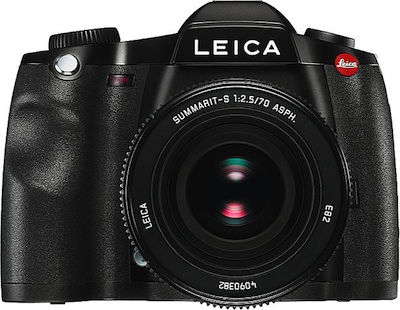
JS: It's a new module, with new optics, and new algorithms. Everything's new about it. They were always going for the most precise auto focus system and they've upgraded those components. The figures that they're giving us say that it's two times more accurate than the previous system.
Going back to my car analogy, whenever Porsche launches a new model, they always say there's X number of new improvements to it. And everyone always asks, "Where?" Because the new one looks just like the old one. That's the same with the S. There are 80 new enhancements, but it looks almost identical to the S2.
DE: Back to accessories. You've announced a new digiscoping adapter for mounting a camera onto a telescope or spotting scope. It's been widely reported that the adapter specifically was made for the Leica X2, but we got the impression looking at the Leica website that it'll also work with other cameras, even non-Leica ones. Is that true? Or is it somehow really tied to the X2?
JS: Well, there are two different photo adapters. There is the X2 adapter which threads on to the mounts on the front of the X2, and then there is the photo adapter which is the long tube that has the optics in it. The X2 adapter drops over the eyepiece, clamps on the eyepiece of the Televid [spotting scope] and lets you photograph through the eyepiece, where the other photo adapter's a longer tube, ends in a T mount, so you could go Canon EOS to T mount, a Nikon to T mount or we're making an M to T mount adapter. Because now, the M becomes a workable solution on that with the Live View. So you could end up with an 800mm lens on an M.
DE: If one of our readers decide they want a Paul Smith edition X2, how do they go about getting in line for that?
JS: Just a quick little background on that. Paul Smith's father was a photographer. Paul Smith grew up with photography and owns X1s and actually bought an X2. That's how we knew him. Leica UK did a case for the D-Lux 5 about a year and a half ago. That was a Paul Smith edition so it was leather on the outside with Paul Smith stripes on the inside. And Paul's love of photography and everything kind of came together. It was great synergy. We asked him if he wanted to do it, because he likes to take classic things and throw a twist on them. So it's that classic with a twist.
Those cameras will be available through our Leica shops. In America, that's the Leica store in Washington, D.C., then West Palm Beach. Stores in New York City and Miami should be opening in November.
DE: I see a parallel there with Apple, where they've been hugely successful with their own retail stores. Is Leica repeating that model, where you've got a very premium product, you have the specific customer base and now you're looking at going more directly out into the retail to have more points of contact with those people?
JS: There's definitely a corporate drive to move in to that arena.
DE: Well, I think I'm finally at the end of my questions here. Thank you for the time and all the answers, Justin.
JS: No problem, Dave. My pleasure.
